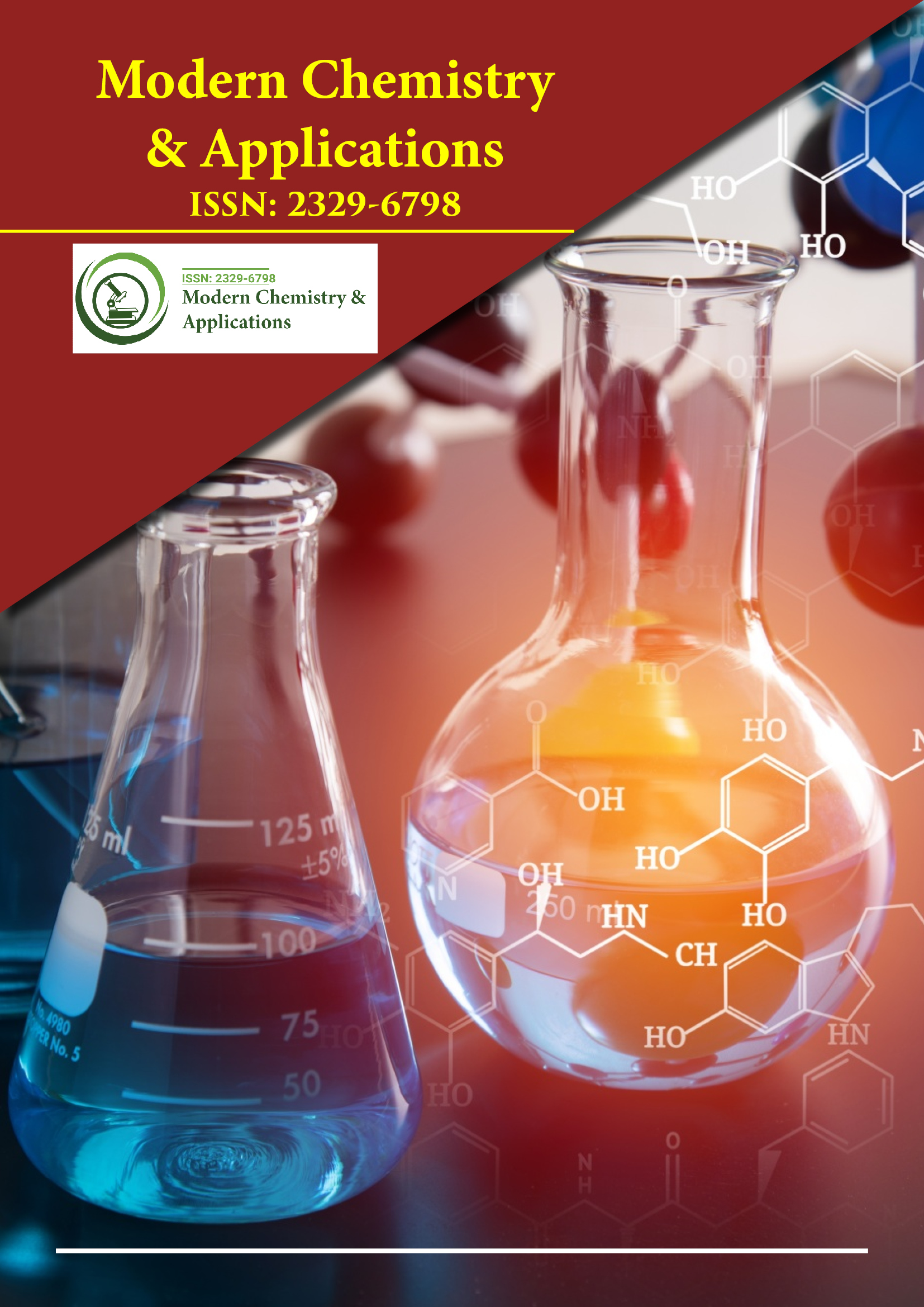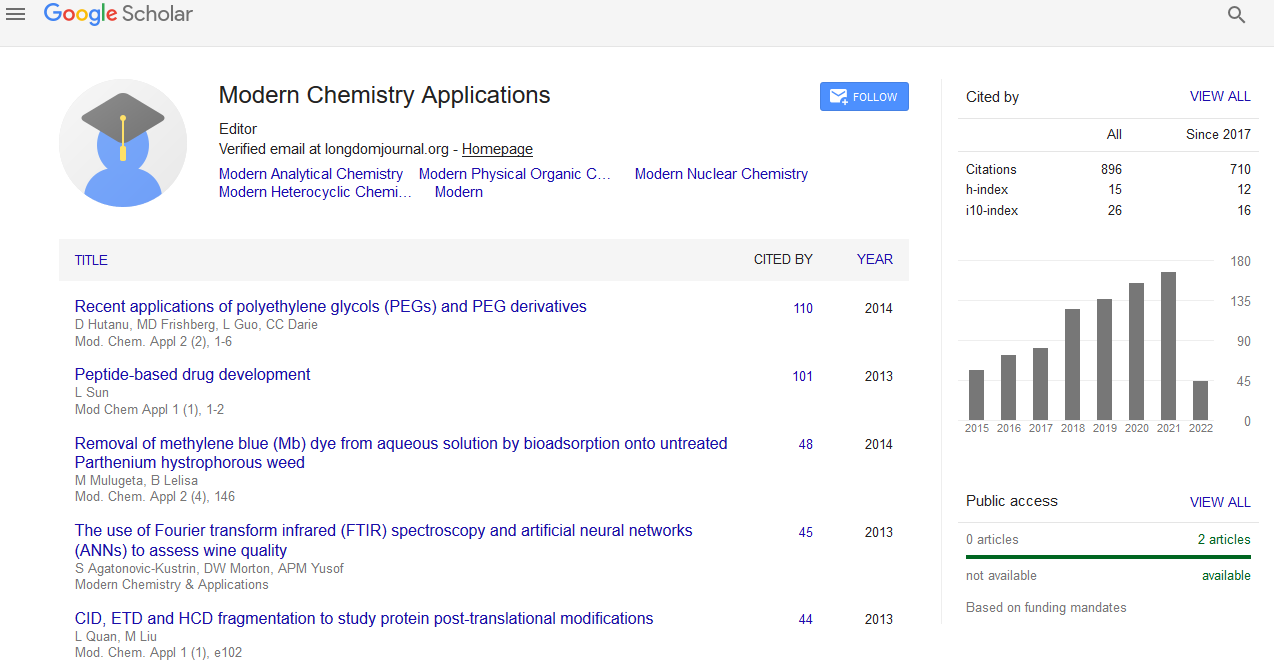Indexed In
- Open J Gate
- JournalTOCs
- RefSeek
- Hamdard University
- EBSCO A-Z
- OCLC- WorldCat
- Scholarsteer
- Publons
- Geneva Foundation for Medical Education and Research
- Google Scholar
Useful Links
Share This Page
Journal Flyer

Open Access Journals
- Agri and Aquaculture
- Biochemistry
- Bioinformatics & Systems Biology
- Business & Management
- Chemistry
- Clinical Sciences
- Engineering
- Food & Nutrition
- General Science
- Genetics & Molecular Biology
- Immunology & Microbiology
- Medical Sciences
- Neuroscience & Psychology
- Nursing & Health Care
- Pharmaceutical Sciences
The influence of preparation methods on halloysite nanotubes supported Ni catalysts for hydrogenation of benzene
5th Global Chemistry Congress
September 04-06, 2017 | London, UK
Noor Hana Hanif Abu Bakar, F Yusli, W L Tan and M Abu Bakar
Universiti Sains Malaysia, Malaysia
Posters & Accepted Abstracts: Mod Chem Appl
Abstract:
A series of halloysite nanotubes supported nickel catalysts (Ni-HNT) were prepared using classical (C) and non-classical (NC) methods via impregnation technique. The Ni content was varied between 2-14 wt %. Catalysts were characterized via Atomic Absorption Spectroscopy (AAS). The catalysts prepared via NC methods contained a lower amount of Ni species. Furthermore, electron microscopy images showed that although the Ni species were scattered with some agglomeration in both the C and NC catalysts, the Ni species were more aggregated in the NC catalysts. These occurrences are attributed to the preparation method employed and is related to the mobility of the Ni species during preparation of the catalysts. The surfaces of the catalysts were characterized using Hydrogen Temperature-Programmed Desorption (H2-TPD), Hydrogen Temperature- Programmed Reduction (H2-TPR) and H2 Chemisorption techniques. The H2-TPR analysis demonstrated the availability of bulk NiO species in the C catalysts while surface oxides were available in the NC catalysts. H2-chemisorption studies indicated that the total surface area of the Ni active phase in the C catalysts were larger than the NC catalysts. Even so, the H2-TPD analyses reveal that different active sites were available in the C and NC catalysts. These different active sites influenced the catalytic reactivity of the catalysts. The catalysts prepared using the NC method showed high amounts of H2 spillover. In addition, the 7.7 wt% Ni-HNT/NC catalysts exhibited additional active sites and the largest amount of desorbed H2. This resulted in the better catalytic reactivity for the hydrogenation of benzene to cyclohexane when compared to the C catalysts.


